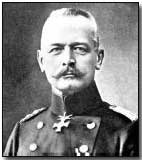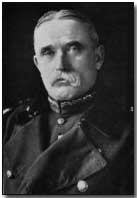First World War.com - Battles (original) (raw)
Battles - The First Battle of Ypres, 1914
 Strategically located along the roads leading to the Channel ports in Belgian Flanders, the Belgian city of Ypres had been the scene of numerous battles since the sixteenth century. With the German failure at the Battle of the Marne in September 1914 and the subsequent Allied counter attacks, the "Race to the Sea" began.
Strategically located along the roads leading to the Channel ports in Belgian Flanders, the Belgian city of Ypres had been the scene of numerous battles since the sixteenth century. With the German failure at the Battle of the Marne in September 1914 and the subsequent Allied counter attacks, the "Race to the Sea" began.
This so called race ended at the North Sea coast after each army attempted to outflank the other by moving north and west. This area of Flanders, described by one historian as having the dreariest landscape in Western Europe, contained the last gap through which either side could launch a decisive thrust.
By October 1914, the Allies had reached Nieuport on the North Sea coast. The Germans, as a prelude to General Erich von Falkenhayn's Flanders Offensive, capturedAntwerp and forced its Belgian defenders back to Nieuport, near Ypres.
Under the command of Field Marshall Sir John French, the British Expeditionary Force (BEF) retreated to Ypres after Antwerp fell. They arrived there between 8 and 19 October to bolster the Belgian and French defence. The Allied position around Ypres took the shape of a small salient in the trench lines because it could best be defended from the low ridge of higher ground to the east, but it was vulnerable to superior German artillery. The BEF held a thirty-five mile long line in the centre of the bulge while the French Army in the area, commanded by General Ferdinand Foch, manned the flanks to the south of the city.
At the outset of the battle, French and Foch both retained the hope of launching an offensive of their own. They believed a coordinated attack would enable the Allies to recapture the industrial city of Lille, Belgium, followed swiftly by Brussels. The new German Army Chief of Staff, Falkenhayn, quickly corrected their optimistic beliefs.
Falkenhayn's Flanders Offensive began on 20 October when he ordered an advance to break through the Allied line and capture the ports of Dunkirk, Calais, and Boulogne. He struck the Belgian defences on theYser River between Dixmude and Nieuport.
The already weakened Belgian Army fought valiantly, but the German actions forced Belgium'sKing Albert to open the sluices that held back the sea. On 27 October, the Belgians flooded the land between their positions and the Germans' along the twenty-mile strip of land between Dixmude and Nieuport, creating a two-mile wide water barrier that forced Falkenhayn to halt and reconsider his plans.
 The second phase of the Flanders Offensive was a series of assaults against the city of Ypres. To seize it, Falkenhayn had at his disposal the newly assembled Fourth Army (made up of units from the siege of Antwerp and eight new divisions manned by underage recruits) commanded by theDuke of Wurttemberg, a cavalry corps, andPrince Rupprecht of Bavaria's Sixth Army.
The second phase of the Flanders Offensive was a series of assaults against the city of Ypres. To seize it, Falkenhayn had at his disposal the newly assembled Fourth Army (made up of units from the siege of Antwerp and eight new divisions manned by underage recruits) commanded by theDuke of Wurttemberg, a cavalry corps, andPrince Rupprecht of Bavaria's Sixth Army.
These forces gave the Germans a considerable numerical advantage over the BEF's seven infantry divisions (one was held in reserve) and three cavalry divisions. For replacements, General French could only count on a few divisions of Indian troops already en route as reinforcements. The Indian units would soon prove to be outstanding fighters in both offence and defence.
The attacks began along a much narrower front on 31 October when German cavalry drove a smaller British cavalry unit from its position on the Messines Ridge at the southern end of the salient. Shortly thereafter, German forces engaged GeneralDouglas Haig's First Corps further to the north, but a ferocious British counterattack repelled the Germans. Thanks to superior British rifle fire, they were able to hold this sector. The British rifles were so fast and deadly that the Germans mistakenly believed they were facing Britishmachine guns.
On 11 November, two premier German divisions attempted to break the British lines just north of theMenin Road in the Nuns' Woods only four miles from Ypres itself. The Prussian Guards and the 4th Division sought the town ofHooge; the attack lasted all day. Initially successful in creating a breakthrough, the Germans were slow in exploiting their gains. German indecisiveness enabled the British to assemble a motley collection of soldiers (cooks, officer's servants, medical orderlies, clerks, and engineers) who stemmed the enemy advance and eventually drove them back to their own lines.
Fighting around Ypres would linger on until 22 November when the onset of winter weather forced a break in hostilities. The combat during this engagement was extremely confusing and unrelenting. After the fight, British survivors were content to say that they had been at "First Ypres"; no more information was necessary to explain what they endured.
One soldier, Private Donald Fraser, explained it this way: "one [a man] was not a soldier unless he had served on the Ypres front." Less than half of the 160,000 men the BEF sent to France came out of the encounter unscathed. After November 1914, the British would come to call these trenches 'the Salient" and would remain as Ypres' guardians for the rest of the war.
There were eventually three major battles at Ypres (click here to read a summary of the second;click here for the third, also known simply as Passchendaele), but the First Battle of Ypres was one of the most significant. First Ypres foreshadowed how the fighting on the Western Front would play out as the war progressed. Atrociously high casualty figures from each participating army combined with fighting and living in trenches would soon come to dominate the stalemate that was the Western Front.
Click here to view a map of the German retreat following the Marne battle and the subsequent race to the sea.
Article contributed byWilliam P. McEvoy
References:
Keegan, John. The First World War. New York: Alfred A. Knopf, 1999.
Lyons, Michael J. World War I: A Short History. 2nd Ed. Upper Saddle River: Prentice Hall, 2000.
Reginald H. Roy, ed. The Journal of Private Fraser, 1914-1918, Canadian Expeditionary Force. Victoria: Sono Nis Press, 1985.
Photographs courtesy of Photos of the Great War website
The Western Front Today: Menin Gate
The Western Front Today: Ypres Cloth Hall
The Western Front Today: Hellfire Corner
Joseph Joffre's Report on the First Battle of Ypres
"Gas Bag" was a slang term for airships.
- Did you know?